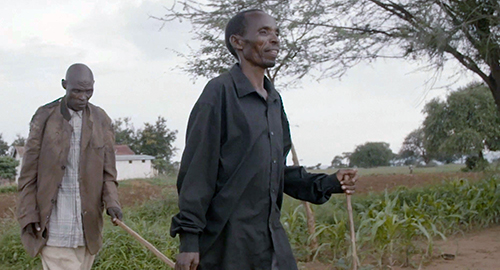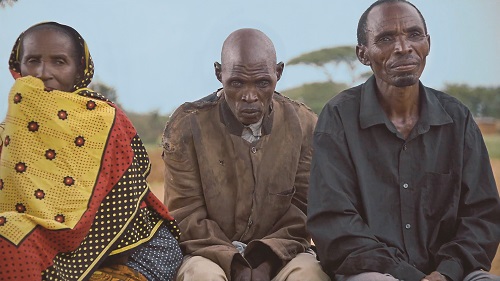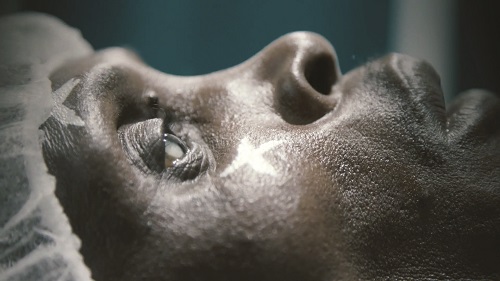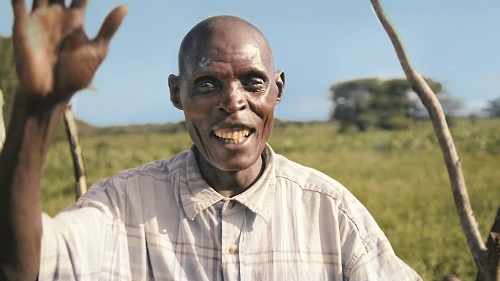Breadcrumb

Matias was a farmer, living with his wife in a village a few hours away from Dodoma, Tanzania. The couple had three children; each one died before reaching the age of three. Their mother, stricken by pneumonia, followed them in death. Then, in his 40s, Matias went blind.
But he was lucky. In a society that often ignores people with disabilities, Matias had a loving big brother. Boniface took Matias into his home with his wife and five children on a few modest acres of corn. Boniface cared for his brother, bathing him and using a walking stick to lead him through the fields safely.
Each moment, though willingly given by Boniface, took time away from fields that needed tending—the family’s only means of support. They had trouble getting ahead: Boniface always needed to save a little money to take care of his brother.
Seeking Help

On one rainy April day, Boniface, his wife, and Matias set out on a four-hour walk of hope to the nearest village with health workers at a rudimentary clinic. They had heard American doctors from the John A. Moran Eye Center’s Global Outreach Division would be there working with their Tanzanian partner surgeons.
Matias shuffled quietly into a long line of patients, head held low. When spoken to, he seemed confused. Boniface would often repeat the doctor’s questions in his ear.
Two circles of white completely clouded his eyes, and doctors confirmed they were dense cataracts, a natural clouding of the lens in the eye usually associated with aging. In the developing world, cataracts often occur earlier due to extreme sun exposure and malnutrition.

The doctors said they could restore his sight, and Matias was anxious to have his life back. With the aid of a translator, he explained his blindness: "He says his soul feels disconnected from his body. He doesn’t know where to go, what to touch, how to live."

The outreach team referred Matias to the University of Dodoma’s Benjamin Mkapa Hospital, where an international team of surgeons led by Moran’s Alan S. Crandall, MD, and Dodoma’s Frank Sandi, MD, partnered to perform surgeries that replaced the clouded lenses with clear synthetic ones.
The next morning as Matias’s eye patches were removed, he looked for his brother. With a shout of recognition, Matias hugged his brother, who led him to a window. Matias excitedly picked out buildings, houses, and trees. The colors, he told the translator, were back, and so was his life.
Moran's Model for Change
Matias’s journey is one example of curable blindness found not only in low-resource countries but in parts of the U.S. as well. Ophthalmologists can cure cataracts with surgery. But there are too few ophthalmologists in the areas of greatest need. Without access to care, patients and families suffer, and economies stagnate.
Moran’s Global Outreach Division conducts large-scale surgical outreach with strategic partners throughout the world to create sustainable eye care systems. However, Moran’s work goes beyond providing care. Through broad training initiatives with local doctors and nurses, Moran is increasing access to care.
"It’s gratifying to see progress in Tanzania, but the country still has a long road ahead. Our next step is building eye care capacity in the surrounding region through training of public health workers in the six surrounding districts."
Jeff Pettey, MD, Moran’s Global Outreach Division co-medical director
Tanzania’s eye care system is developing rapidly. In Dodoma, the capital city, Moran has worked with the government and local partners to train physicians, nurses, and health care workers at the university hospital.
There, Frank Sandi, MD, is launching the capital city’s first ophthalmology residency program—a fundamental step in addressing the extreme shortage of eye doctors. As president of the Tanzania Ophthalmology Society, Sandi also organized the first All Eye Health Workers Congress, broadening impact throughout the country that is home to 55 million people.
"It’s gratifying to see progress in Tanzania, but the country still has a long road ahead," said Moran’s Global Outreach Division Co-Medical Director Jeff Pettey, MD. "Our next step is building eye care capacity in the surrounding region through training of public health workers in the six surrounding districts. The workers will learn to screen patients and refer them to local district hospitals to receive basic eye care, while patients requiring surgical care will be bused to Dodoma."
Moran is already working to replicate the successes in Dodoma with partners from Weill Cornell at the Bugando Medical Centre in Mwanza, where four partner ophthalmologists serve a population base of 16 million.